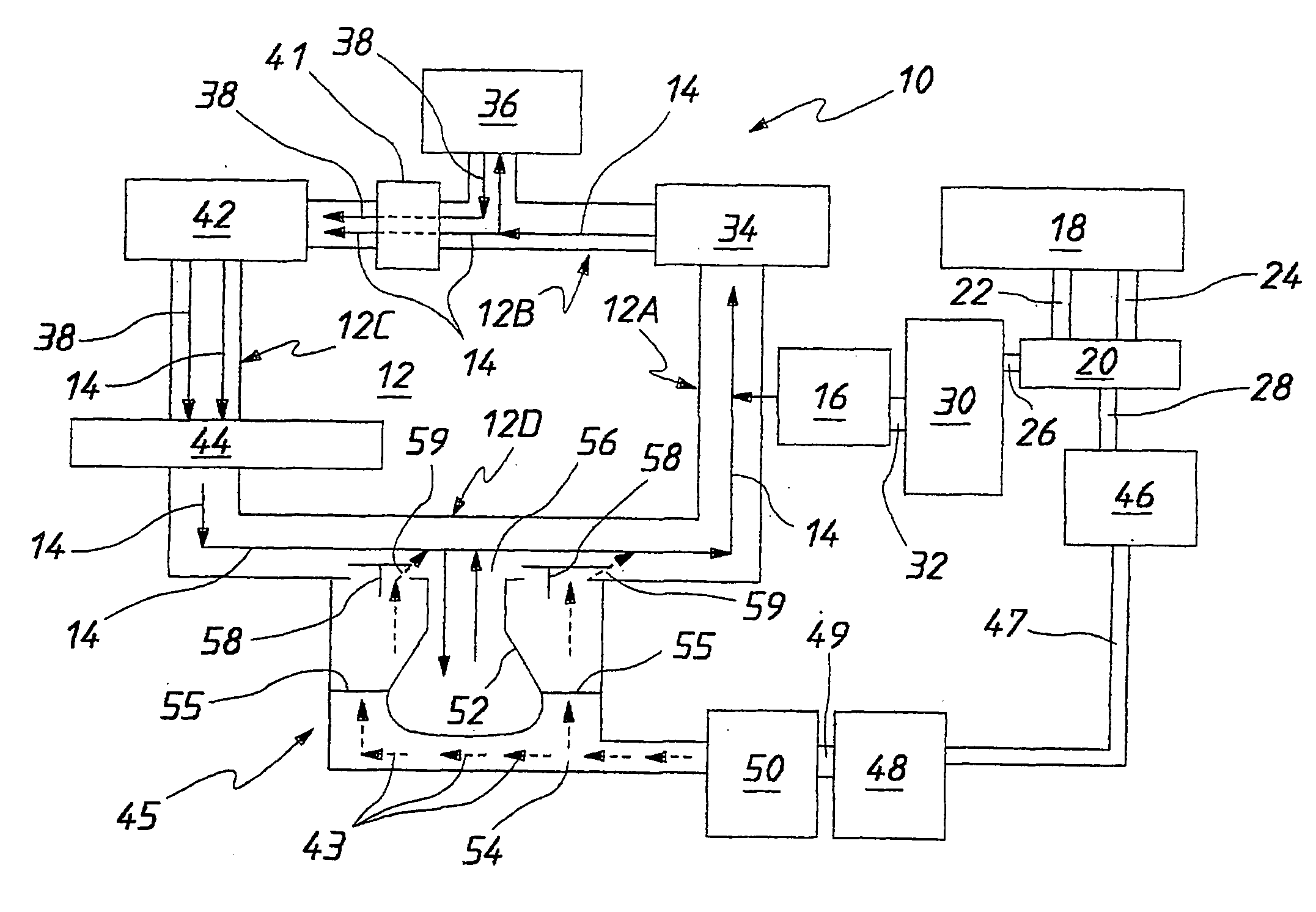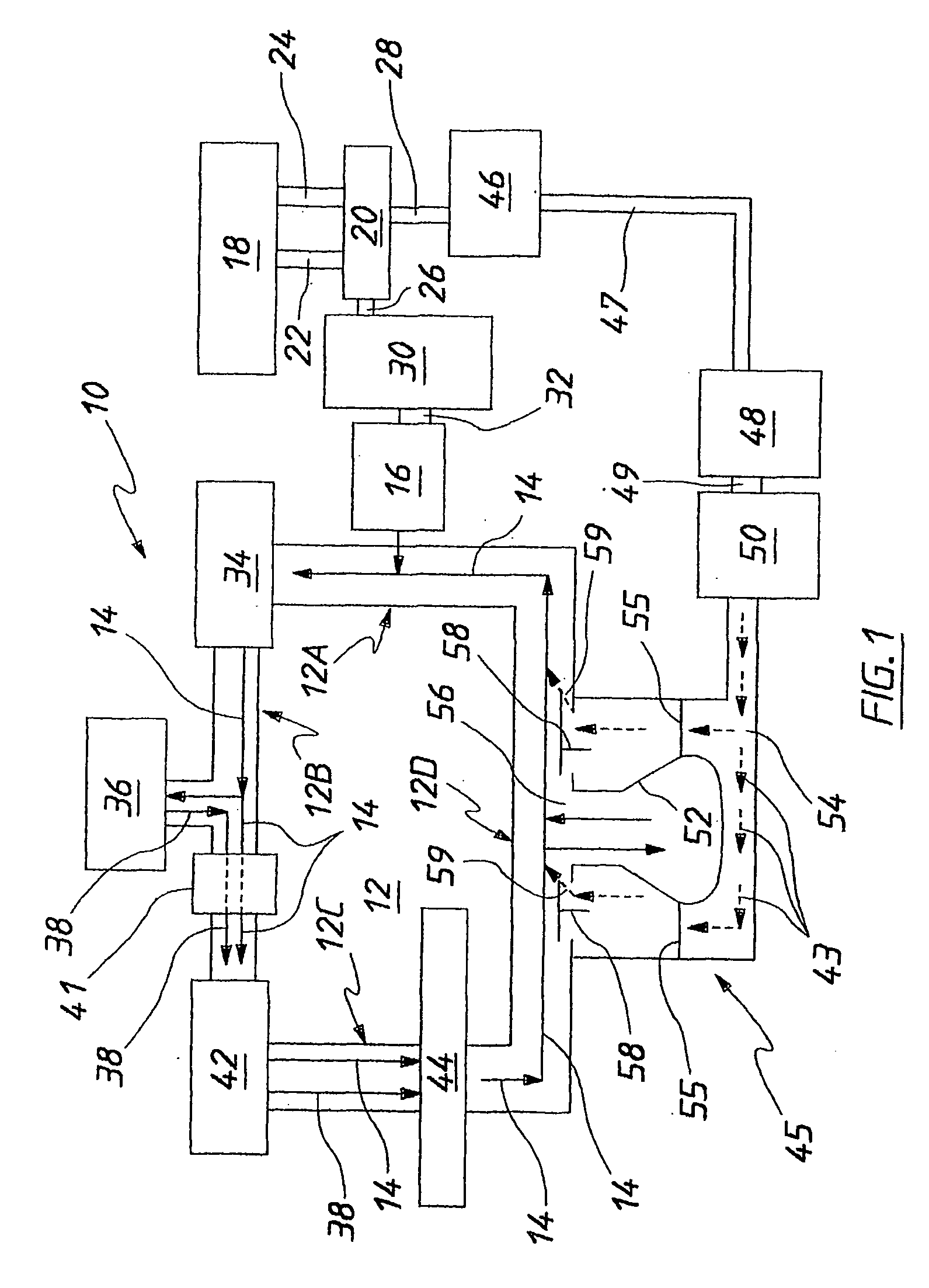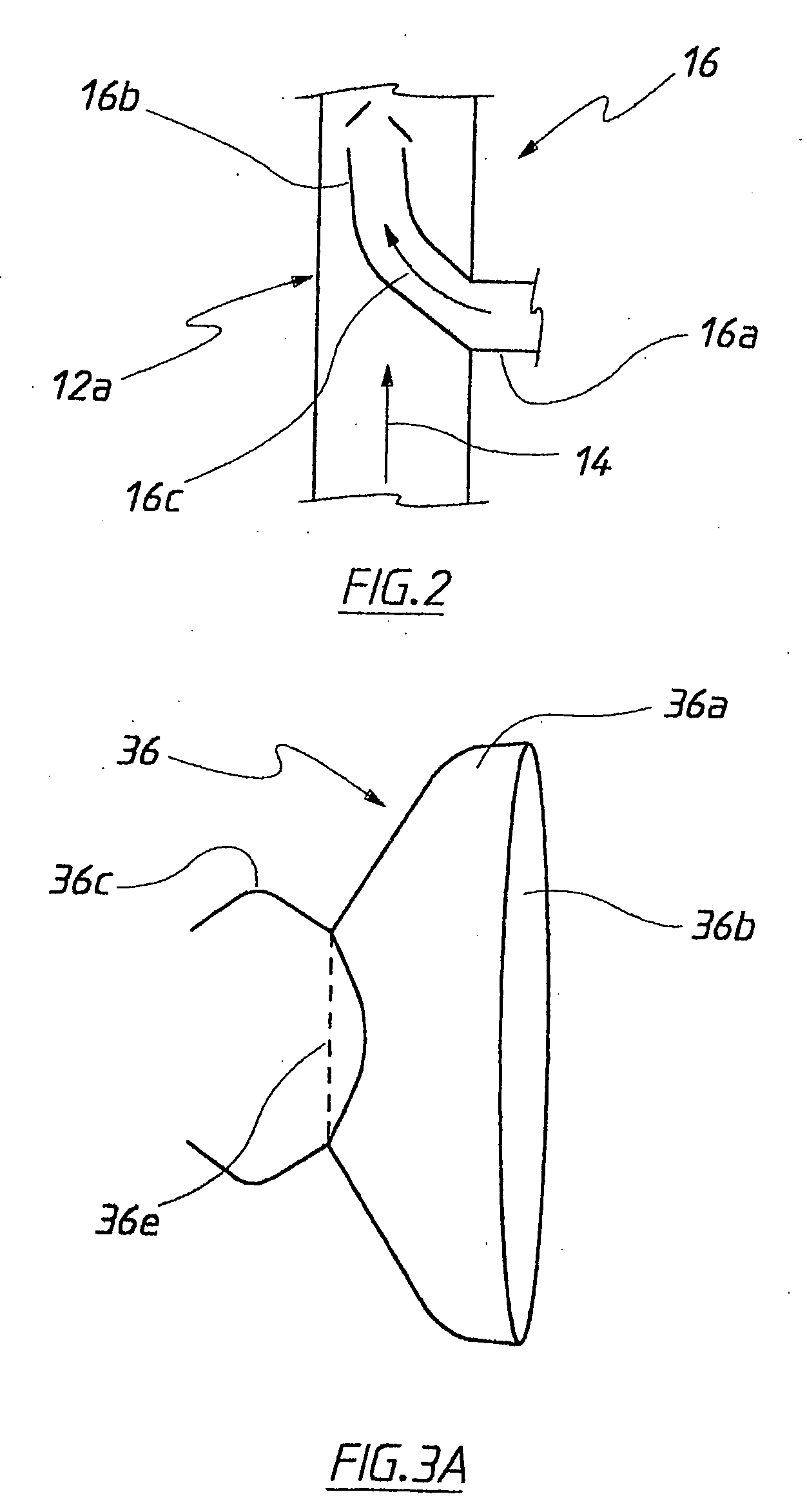Respiratory assist device and method of providing respiratory assistance
a technology of respiratory assistance and assist device, which is applied in the direction of breathing mask, breathing filter, breathing protection, etc., can solve the problems of high gas consumption, unsuitable for delivering breathable gas with a high concentration of oxygen, and high gas consumption, so as to increase the velocity of the gas mixture in the circui
- Summary
- Abstract
- Description
- Claims
- Application Information
AI Technical Summary
Benefits of technology
Problems solved by technology
Method used
Image
Examples
Embodiment Construction
[0053] Referring firstly to FIG. 1, there is shown a schematic diagram of a first embodiment of a non-invasive respiratory assist device 10 adapted for transport use, particularly emergency patient transportation. The device 10 includes a number of components, as will be described in detail below, connected in a (substantially closed) gas circuit 12. The circuit 12 is divided into four main circuit sections (12a,b,c and d), which are preferably formed from hospital grade, semi-opaque or transparent, plastic tubing of approximately 22-25 mm in diameter.
[0054] The tubing section 12a is preferably about 500-750 mm long and has a mixture of fresh and carbon dioxide depleted gas flowing therethrough as indicated by arrow 14, preferably at a rate of about 80 L / min and at a pressure of 5-15 mm Hg.
[0055] A venturi means, in the form of a jet delivery nozzle 16, receives fresh gas (eg. Oxygen) from a supply 18. The jet delivery device 16 is in gas communication with the circuit section 12a...
PUM
 Login to View More
Login to View More Abstract
Description
Claims
Application Information
 Login to View More
Login to View More - R&D
- Intellectual Property
- Life Sciences
- Materials
- Tech Scout
- Unparalleled Data Quality
- Higher Quality Content
- 60% Fewer Hallucinations
Browse by: Latest US Patents, China's latest patents, Technical Efficacy Thesaurus, Application Domain, Technology Topic, Popular Technical Reports.
© 2025 PatSnap. All rights reserved.Legal|Privacy policy|Modern Slavery Act Transparency Statement|Sitemap|About US| Contact US: help@patsnap.com



